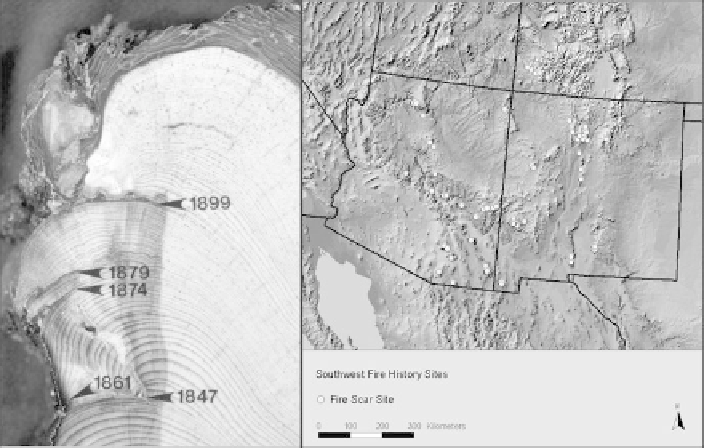Geoscience Reference
In-Depth Information
Fig. 9.1
Photograph of a cross section of a fire-scarred ponderosa pine (
left
), and map of locations
of 120 fire-scar collection sites in the southwestern United States (
right
). The arrows on the cross
section point to fire scars created when surface fires burned near the base of this tree. After each
fire left a scar, subsequent tree rings grew over the dead tissue. The last fire scar in 1899, and
subsequent century of growth with no fire scars, reflects the effects of fire suppression and the
exclusion of widespread surface fires
has provided evidence to reconstruct detailed chronologies of fire history in hun-
the most developed among dendroecological data networks, with more than 400
fire-scar time series included in the International Multiproxy Paleofire Database
(
http://www.ncdc.noaa.gov/paleo/impd
/).
The power of a dendroecological network for assessing fire/climate relationships
is illustrated here with an example from the southwestern United States. At present,
there are a total of 120 crossdated fire-scar chronologies that have been compiled
composed of sets of 20 or more fire-scarred trees sampled in forest stands of about
for details of site selection and other details). Compilation of fire dates recorded
among multiple sites results in a regional fire chronology, which documents years
when both highly synchronous fires were burning in many sites across the region as
The Southwestern regional fire chronology documents strong relationships both
with hydroclimatic variables and with ocean-atmosphere indices, such as the El
as years when fire scars were recorded on trees at more than 20 sites—mainly

